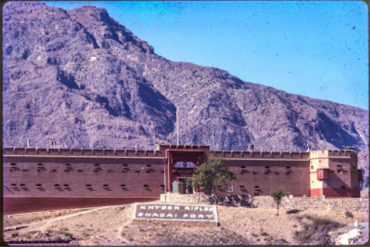New Delhi, May 24 (IANS) The searing heat in the capital has led to toxic ozone rising to dangerous levels, giving rise to health issues such as chest pain, coughing and congestion, a scientist said Friday.
And with ozone pollution set to increase further, the situation could worsen, warned Gufran Beig of the Indian Institute of Tropical Meteorology (IITM) in Pune.
“It can worsen bronchitis, emphysema and asthma,” Beig told IANS in a telephonic interview.
“Ground level ozone also can reduce lung function and inflame the linings of the lungs. Repeated exposure may permanently scar lung tissues,” he said.
Delhi’s temperature touched 45.7 degrees Celsius Thursday, the highest in May in the past 10 years. And there is no immediate sign of any respite.
This is a steep climb from the 36 degrees recorded May 11.
Scientists have found unusually high levels of toxic ozone in the city in the past two weeks.
Exposure to high levels of ozone induces adverse effects not only on human health but damages vegetation and eco-systems as well.
“Delhi’s air is known to get polluted mainly due to the rise in particulate matters which can be felt when visibility becomes poor on extreme days,” Beig said.
“But it is for the first time in the last three years (since pollution levels are being studied) that invisible gaseous pollutant ozone is playing havoc,” said Beig, who is programme director of SAFAR, a system put in place during the Commonwealth Games in New Delhi.
SAFAR or System of Air quality and Forecasting and Research network is meant to keep a tab on pollution levels in the national capital.
“During the past two weeks, on account of continuous record rise in temperatures in Delhi and uninterrupted non-cloudy sunshine, the ozone level has increased,” Beig said.
“It is likely to touch a level of 120 ppb (parts per billion) May 26 against the permissible limit of 50,” he said.
This, he said, is level three on a 1-5 scale and classified as ‘poor’.
Sunil Peshin, in-charge of SAFAR, said pollution along with strong sunshine produces ozone at the ground level.
“Ozone is emitted by a range of human activities, including transportation. If current extreme weather condition prevailed for longer time, it can increase toxic ozone production,” said Peshin.
Increased of air conditioners and alliances like refrigerators as well as the rise in the number of cars are adding to ozone levels.
The opinions, beliefs and viewpoints expressed by authors, news service providers on this page do not necessarily reflect the opinions, beliefs and viewpoints of Hill Post. Any views or opinions are not intended to malign any religion, ethnic group, club, organization, company, or individual.
Hill Post makes no representations as to the accuracy or completeness of any information on this site page.



